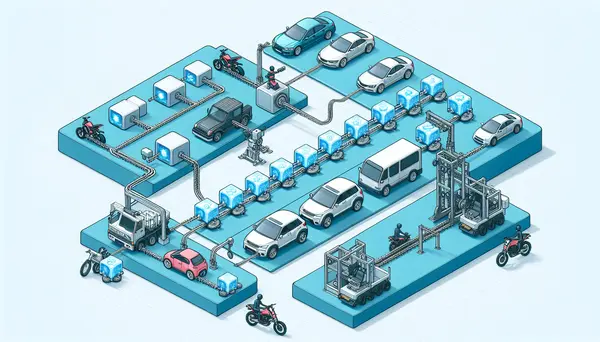Coin-Report - Cryptocurrency and Blockchain

Exploring Elite Investment Trends: Why the Ultra-Rich Shun Bitcoin for Real Estate
Beyond Bitcoin: How the Ultra-Rich Invest Their Money According to a report by FOCUS Online, the wealthiest 0.001 percent of the world's population pr...

SEC Postpones Ethereum ETF Decision, Casting Uncertainty on Crypto Market Future
SEC Delays Decision on Ethereum ETFs, Impacting Market Sentiment The U.S. Securities and Exchange Commission (SEC) has once again postponed its decisi...

Ultra-Rich Favor Real Estate Over Bitcoin for Secure Investment
The Ultra-Rich Shun Bitcoin, Opt for Real Estate Investments According to a report by FOCUS Online, the world's ultra-wealthy are increasingly investi...

Ripple Challenges SEC's $2 Billion Fine as XRP Faces Crucial Legal and Market Tests
XRP-Gate: Ripple's Legal Battle with the SEC In a recent development reported by FXStreet German site, Ripple has pushed back against a staggering $2 ...

Cryptocurrency Market in Flux: Spotlight on Ethereum's Potential ETF Impact and Price Predictions
Market Analysis: Focus on Cryptocurrencies Recent movements in the cryptocurrency market show a mixed performance of leading digital currencies. Accor...

IMF Endorses Bitcoin as a Vital Asset for Financial Stability Amid Global Economic Challenges
Financial Instability: IMF Views Bitcoin as a Significant Asset Protection In a recent report, the International Monetary Fund (IMF) highlights the im...

Ripple Gears Up for Legal Showdown: XRP Surges as SEC Battle Looms
XRP News: Ripple Prepares to Challenge SEC In a significant development, FXStreet German site reports that XRP has surged over the $0.50 mark as Rippl...

Solana Surpasses Ethereum as Top Network for Stablecoin Transactions
Ethereum Overtaken: Solana Becomes Global Leader in Stablecoin Transfers As reported by finanzen.net, the blockchain project Solana has surpassed Ethe...

Swiss Initiative Pushes National Bank to Adopt Bitcoin as Reserve Asset
Volksinitiative: Die Nationalbank soll in Bitcoin investieren In der Schweiz wird eine Volksinitiative gestartet, die darauf abzielt, dass die Schweiz...

We have compared the best crypto exchanges for you. Just take a look at our free crypto exchange provider comparison.

We have compared the leading crypto tax tool providers for you. Check out our free crypto tax tool provider comparison.
The Best Bitcoin Mining Providers at a Glance
» Infinity HashFrom our perspective, currently the best mining provider on the market. With the community concept, you participate in a mining pool completely managed by professionals. A portion of the earnings are used for expansion and maintenance. We've never seen this solved as cleanly anywhere else.
» Hashing24A well-known and established cloud hosting company. With a good entry point and in a good market phase, a good ROI can also be generated with some patience. Unfortunately, we see the durations as a major drawback.
Top 10 most read posts

Mastering Technical Analysis for Bitcoin Trading
Introduction to Technical Analysis for Bitcoin Trading Trading in the cryptocurrency world, particularly Bitcoin, requires careful decision-making and strategic planning. One...

Top 10 ICOs to Watch in 2023
Collateral Network (COLT) Collateral Network (COLT) is a next-generation decentralized lending platform that leverages blockchain technology to facilitate secure and efficient...

Bitcoin's Rise and Fall: Historical Analysis
Introduction: Bitcoin's Dynamic Journey Bitcoin, the world's first and most recognized digital currency, is often the subject of dramatic headlines, featuring...

The Role of Cryptocurrencies in Venture Capital: A New Frontier
Introduction - Understanding Cryptocurrencies and Venture Capital As technology evolves, so does our understanding of what makes a valuable asset. The...

Blockchain's Influence on the Automotive Industry
Introduction: Unveiling the Power of Blockchain Blockchain technology is boldly advancing into a variety of industries, utterly transforming our occasional transactions...

ICO vs IPO: Which is the Better Investment?
Introduction: Understanding ICO and IPO Before delving into the difference between ICO and IPO, it's crucial to understand what these terms...

Investment Tips for the Budding Crypto Millionaire
Introduction: An Insight into Crypto Investment If you're venturing into the promising world of cryptocurrencies, a solid investment strategy can be...

How to Build a Diversified Crypto Portfolio: A Step-By-Step Guide
Introduction: The Importance of Diversification Investing in cryptocurrencies can be both exciting and rewarding. However, it's crucial to remember that the...

Understanding ICOs: Risks, Rewards, and Regulations
Introduction to ICOs Initial Coin Offerings, often shortened to ICOs, are an increasingly popular method of fundraising for new projects in...

Blockchain's Potential Beyond Cryptocurrency
Introduction: Blockchain's Potential Beyond Cryptocurrency When we hear the term "blockchain," most of us instinctively think of cryptocurrencies like Bitcoin and...
- Is it possible to trade cryptocurrencies manually, or is automated trading recommended? 2
- How can I use the Ichimoku Cloud indicator in my technical analysis of cryptocurrencies? 3
- How are stablecoins stored in wallets and are there any specific considerations? 7
- How can I ensure the security of my cryptocurrency wallet? 7
- What are the legal considerations for investing in NFTs (Non-Fungible Tokens)? 16
- What are the technical challenges associated with trading cryptocurrency derivatives? 4
- What are some potential hurdles in the adoption of cryptocurrencies on a mass scale? 4
- Are they a good long-term investment? 5
- Do you have any favorite crypto influencers or thought leaders to follow? 6
- How can blockchain technology help to enhance data security? 14

